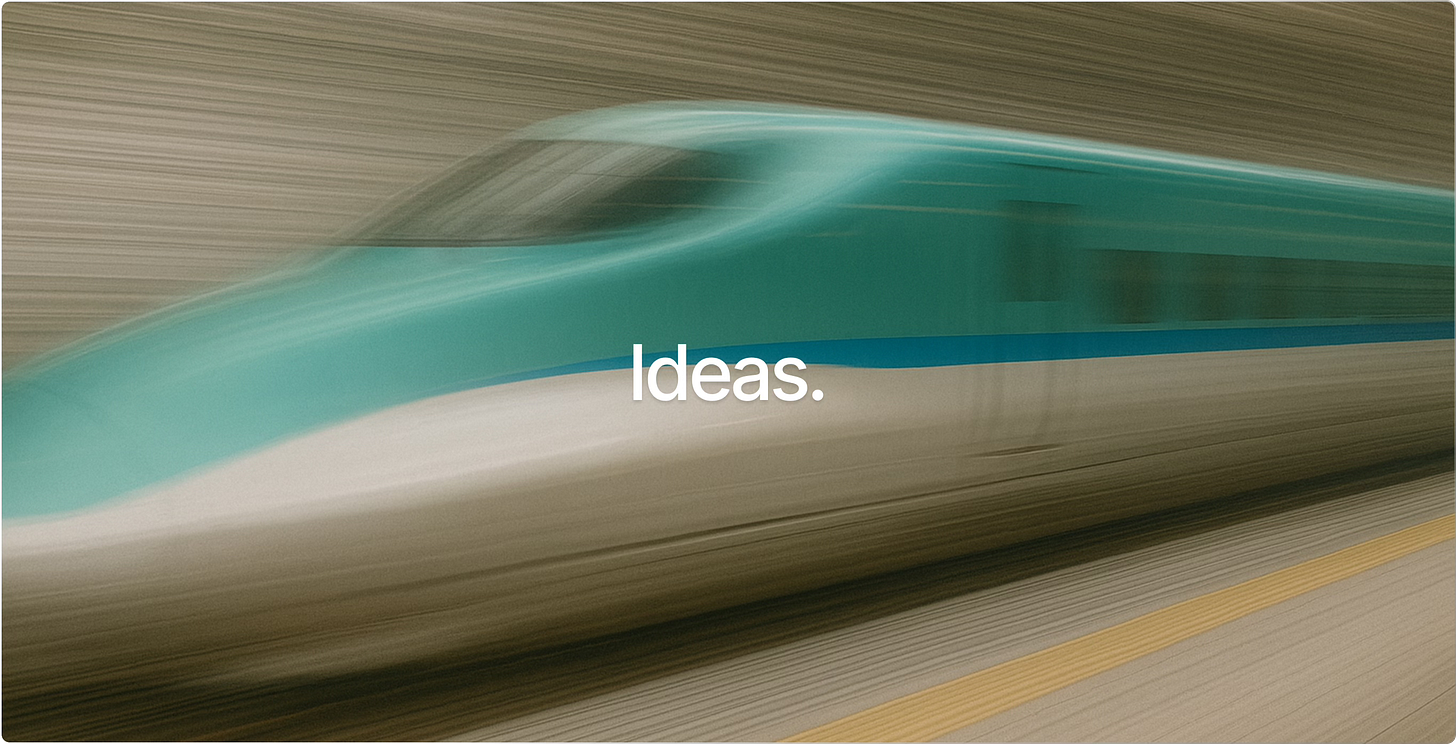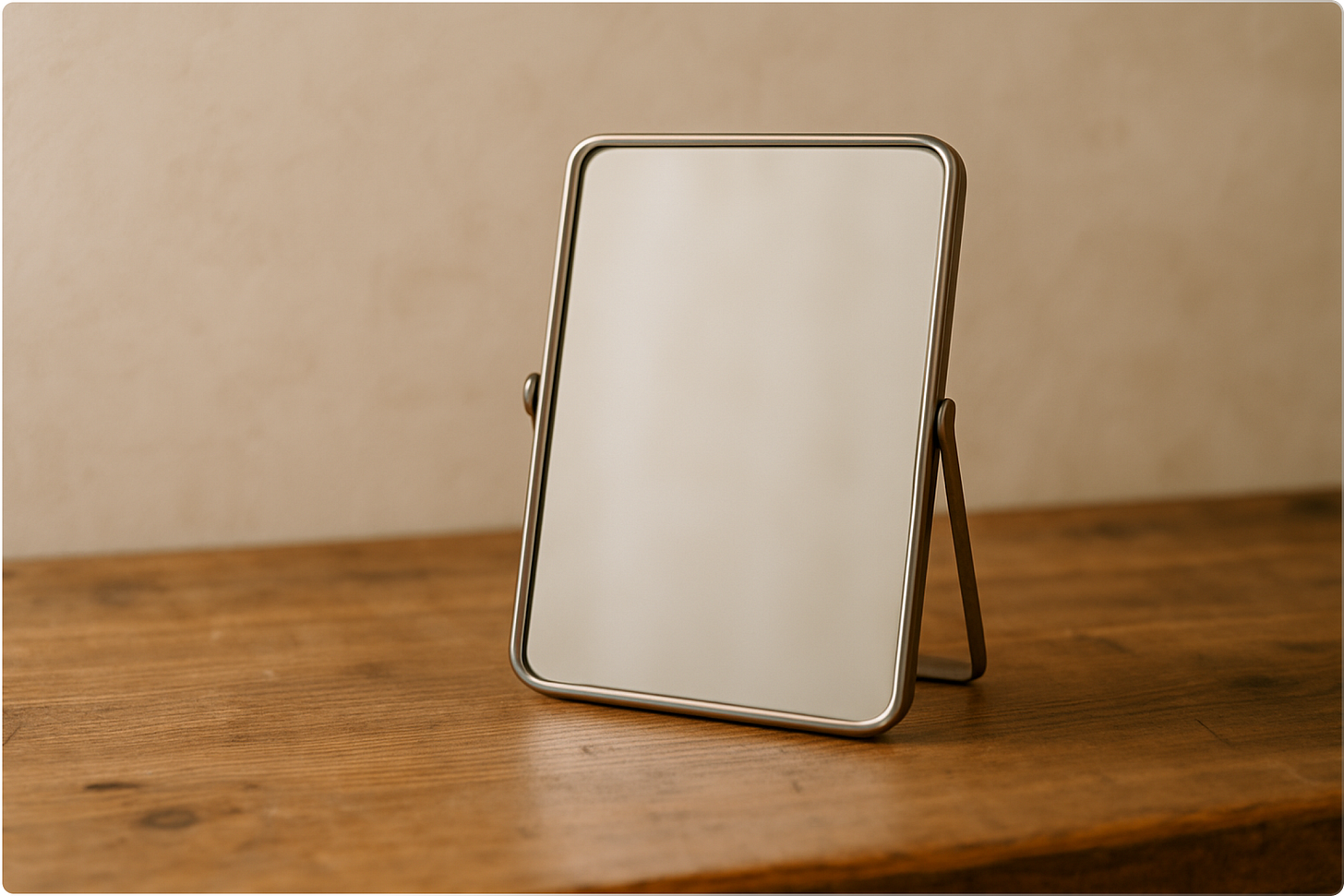An AI toolkit for my overclocked brain
A system using AI as both a Trap and a Mirror to balance speed, clarity, and connection.
When Things Move Too Fast
If your brain moves faster than your judgment, how do you catch yourself?
For me, that’s daily life. Ideas arrive in bursts and crowd for attention before I can sort them. Sometimes that energy feels thrilling, fueling creativity and momentum. Other times, it tips into noise with very little signal.
My brain can feel overclocked: neurodivergence mixed with ambition and high standards. At its best, it helps me see patterns quickly and ride momentum into progress. At its worst, it’s overwhelming, erodes clarity, and turns urgency into distortion.
I’ve learned I can’t always trust my own sense of urgency or importance. What feels brilliant one moment can feel shaky the next. That’s when I become an unreliable narrator of my own thoughts. To stay grounded, I built myself a system that sits just outside my head - one that keeps pace with the way I think.
The system doesn’t fix my brain, but it is built for it.
Traps - Capture
The first anchor of my toolkit is what I call Traps.
Traps catch sparks of ideas before they disappear. They don’t need to be elegant or organized; they just need to hold an idea until I can revisit it. The more they connect into a broader system, the stronger they become.
On the go
When I’m in motion, I need speed with zero friction:
Voice notes: the fastest trap I have, messy and unstructured but reliable.
Otter.ai: my safety net in meetings. It frees me to listen while still capturing detail. (Otter.ai)
ChatGPT Voice Mode: where I can think out loud without pressure, capturing the nuance behind raw thoughts.
Most of these live on my phone’s lock screen; intent to action with almost no delay.
Stationary
At my desk, traps shift toward scaffolding:
Obsidian: my dump zone for high-speed typing, bullet-train-brain meets bullet points. (obsidian.md)
Scrintal: a visual canvas for connecting threads and mapping research. (Scrintal.com)
Notion: the second brain where everything eventually lands, searchable and usable. (Notion.com)
On their own, these tools are fine. Connected. Voice notes flowing into transcripts, notes feeding into Scrintal, Obsidian linking to Notion, and other various permutations that MCP, URIs, APIs, etc. provides. They form a backbone I can trust.
Mirrors - Reflect
If Traps are about catching, Mirrors are about making sense. Reflection is what separates signal from noise and keeps me from drowning in capture.
Connectedness matters here too, the best mirrors don’t just reflect back in isolation, they link into the same ecosystem so nothing is stranded or isloated.
AI mirrors
AI gives me synthetic perspective I can’t always generate on my own:
ChatGPT: my pattern-matching machine. Summaries, critiques, quick tests - it helps me see if an idea is solid or just noise. It also helps augment my “overclocked” superpower I called out earlier.
Prototyping tools: Replit, Cursor, Vercel. Even a scrappy build answers two critical questions: Is this worth more of my time? Can I make it work?
I keep a rotation of AI mirrors; ChatGPT, Claude, Copilot, and their model variants-swapping them depending on what I need: fast summaries, critique, or creative stretch. Prototyping tools are useful, but I’m also drawn to anything that lets me low-code, vibe-code, or no-code an idea into existence. It’s how I decide what’s worth expanding and what to shelve. I spend a small fortune experimenting with different combinations. It may never settle into one perfect stack, but the trial, the error, and the search are part of the fun for me. The other fun part of the AI frontier is that we will always be using the very worst version of it - so the experiementation of my system won’t end.
Human mirrors
AI only goes so far. The clearest reflections come from people:
Friends and peers validate when I’m onto something or call out when I’m spinning.
They see blind spots and reflect not just the idea, but how it lands in the world.
Honesty, humor, and kindness are the ultimate clarity.
Just like with AI, I tend to rotate between people depending on what help they provide - what their specialties are. Some are gut-checkers, others are sounding boards for wild ideas, and a few are the ones who’ll stop me from running too far off track. Each person reflects a different part of the truth, and the mix keeps me balanced.
AI mirrors are scalable and fast. Human mirrors are grounding and true. When they’re tied into the same flow as my traps, when what I capture can be reflected back by both machines and people, the system clicks into place.
Capture → Reflect → Connect
Traps and mirrors give me peace of mind. They don’t erase the chaos, but they make sure sparks aren’t lost and clarity isn’t far behind.
The secret of the system is connection. Each tool works on its own, but together, linked through various integrations, shared databases, and trusted peers they become more than the sum of their parts.
AI helps me capture and test ideas. It gives me clarity in the form of structure, summaries, and prototypes. Friends, peers, and collaborators offer the kind of reflection: perspective rooted in honesty, patience, and kindness.
Clarity is organized information from an LLM. Clarity is kindness from a human. Kindness can seem like a rare commodity during these times but in reality, it costs nothing, so spend liberally.
If the value add of AI is true, and it really does give us time back, that time shouldn’t just be spent on more output. It should be spent on deeper connection, truer reflection, and work that actually improves life.
I built a Notion page to map the system: connectors, decision trees, and suggestions for how AI tools and MCP integrations plug in. I even created an MCP Chef GPT to experiment with automating the connections.
If you’re curious, you can find it here: Dan’s Thinking → Shipping Playbook (Traps & Mirrors).
Here’s a simple loop you can try:
One hour: capture → sensemake prompt A/B → share one POV with a friend.
One day: prototype → AI mirror → decide.
One week: three small experiments → council review with a trusted group of individuals → pick one to scale.
The goal isn’t to capture or test everything. It’s to know that what matters won’t slip away and that when the pace of your brain outruns your judgment, your system will be there to catch, reflect, and connect.
This article is a truncated version of my presentation from the AI UX Summit: Designing the Future of Human-AI Interaction on August 19th, 2025. There were many amazing presentations at the summit and I highly reccomend booking a spot for the next.




